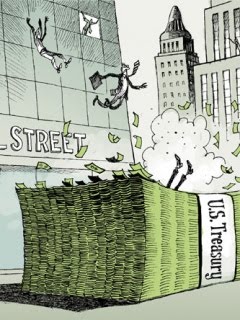Sector: Consumer/Non-Cyclical
Listing: NYSE
Introduction
ADM is a one of the leading global processors of agricultural commodities such as oilseeds, corn, cocoa and wheat. The firm is a leading manufacturer of food and feed ingredients such as vegetable oil, corn, biodiesel, ethanol and flour. The company has a grain elevator and an extensive transportation network to procure, store, clean, and transport agricultural commodities. It also has operations in 32 countries across six continents.
Analysis
EPS has been quite low between 1998 and 2004. Afterwards, it has gone up significantly partially due to a increase in demand for bio fuels, since the governments want to reduce emissions from vehicles. Again, the recession has affected earnings in 2008 and 2009. However, the firm has not made a loss in the past ten years.
EPS growth has been a little inconsistent. However, the average growth is 20.06%.
Return on Equity (ROE) has increased generally between 1999 and 2007. The average is 9.69%. The ROE for 2009 is 12.65% which is above industry average of 8.48%. This suggests that the firm has competitive advantage over it's peers and it's extensive geographical and industrial operations reflect this.
The firm is a dividend aristocrat member (1). Dividends has increased since 1977 (2).
Dividend yield has gone up generally since 1999. There was a dip in 2006 due to increased investment on new opportunities.
Financial ratios as at the close of 22/6/2010 (3) (4):
Using the Value strategy, this stock satisfies all of the defensive criteria. This is because:
- The turnover is greater than $100 million. Importantly for a manufacturer, the firm's net current assets is greater than it's non-current liabilities.
- Current ratio of 2.08 provides a good margin of safety in case of all current liabilities become due.
- Dividends have been paid since 1977.
- EPS has been strictly positive over the past ten years, that is, no loss has been made for that period.
- 10 year EPS growth using 3 year averages at the beginning and exceeds 1/3. Using EPS from 1998 to 2000 and 2007 to 2009, 10 year growth is astonishing 498.63%.
- P/BV is below 1.5.
- Average P/E over 3 years is below 15.
Conclusion
This stock is a very good buy in the long term and in this current economic climate.
Note
I will not be responsible for any losses incurred by investors through investing in this stock. Investing in the stock market may result in not getting their initial amount back.
The above data has provided by Edgar Online, except sources 1,2 and 4.
Full disclosure: No positions in ADM.
Source:
- S&P500 retrieved 12/6/2010.
- Archer Daniels Midland Company - Dividend & Split History retrieved 30/6/2010.
- I-Metrix - Edgar Online retrieved 23/6/2010.
- Zacks Invesment Research - ADM: Archer Daniels Midland Co - Financial Overview retrieved 23/6/2010.

























.jpg)
.jpg)






